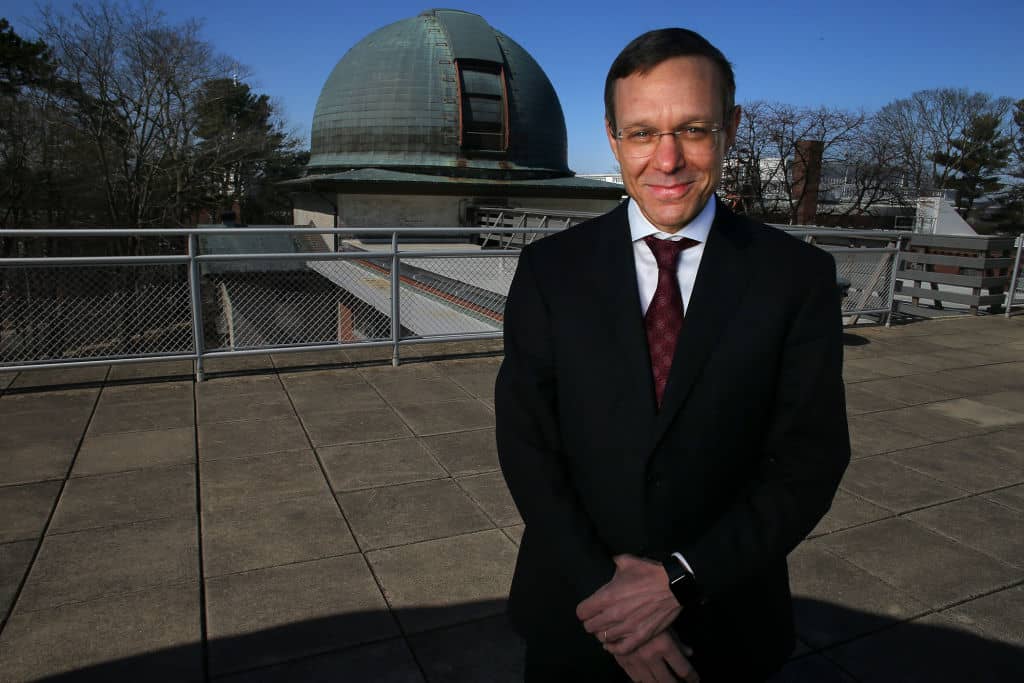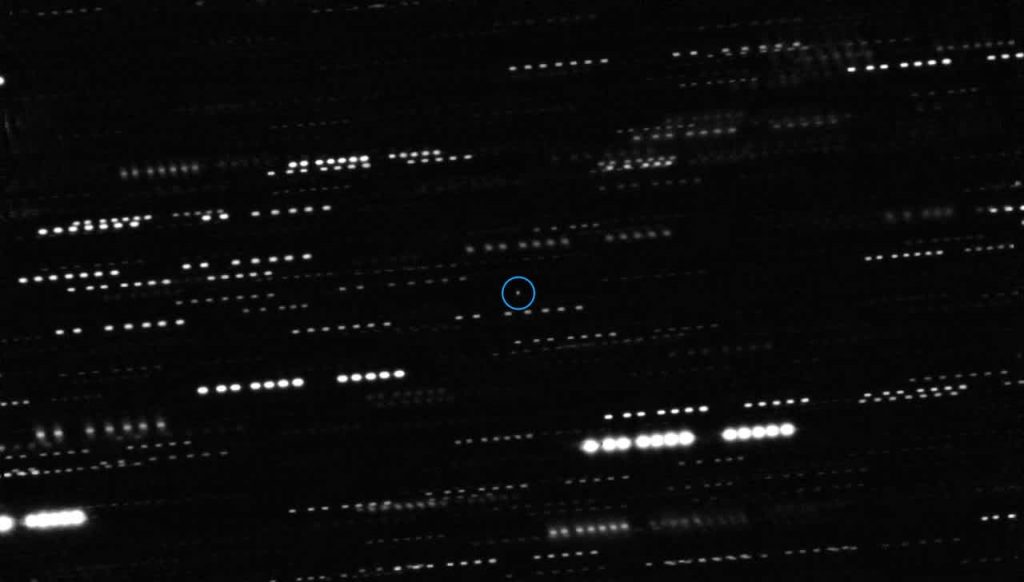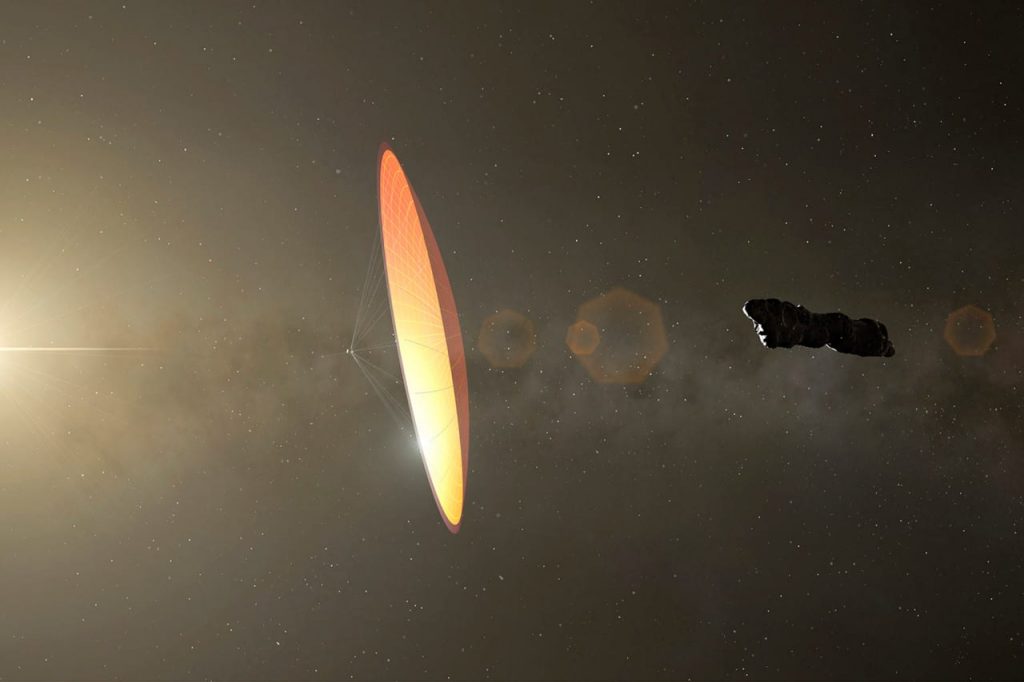In 2017, a bizarre cigar-shaped object wobbled its way through our solar system causing a buzz in the astrophysics community. This object rotated as it went, bouncing into our orbit from the direction of Vega, a nearby star 25 light-years away, before slingshotting its way around the sun and back out into deep space.
It was the first detected space rock that we know to have passed from one solar system into our own. That alone was a huge cause of scientific interest, but now, Avi Loeb, chair of Harvard’s Department of Astronomy, has published a new book claiming the object was something else entirely.
Loeb believes the space object – detected by a telescope in Hawaii and named ‘Oumuamua, Hawaiian for “scout” – could be a discarded piece of space junk from a perhaps extinct race of aliens.

Loeb is not some scientific crackpot – though he is an outlier in his theories and does have a book to sell so take that with a grain of salt or three – he’s also director of the Institute for Theory and Computation, the founding director of The Black Hole Initiative, and the chairs of both the Breakthrough Starshot Advisory Committee and the National Academy’s Board of Physics and Astronomy.
The argument for the space rock being of extraterrestrial origin is laid out in his upcoming book Extraterrestrial: The First Sign of Intelligent Life Beyond Earth in which he carefully reviews and counters all of the arguments against it being purely organic.
For one thing, the so-called comet was at least five to 10 times longer than it was wide – something no normal space rock that we’ve ever seen has looked like.
“This would make “‘Oumuamua’s geometry more extreme by at least a few times in aspect ratio — or its width to its height — than the most extreme asteroids or comets that we have ever seen,” Loeb writes in his book.
What’s more, ‘Oumuamua was unusually bright. It was at least “ten times more reflective than typical solar system [stony] asteroids or comets,” the author writes, likening its surface to a shiny metal than rock.

But the real kicker is the way that ‘Oumuamua travelled. Physicists can usually predict the exact path an object travelling through space should take and what speed it should be going based on the gravitational force of by the sun. The sun’s pull will speed an object up as it gets closer to it, then shoot it around the other side, slowing the object down as it struggles to pull away from the star.
But that’s not what happened here. As it went around the sun, ‘Oumuamua accelerated as though being pushed by something other than the gravity of the sun.
This could be explained by the melting of frozen gas within the body of the object as it nears the sun acting like a jet propulsion to shoot it off again. This is what normally happens with comets but in doing so, they leave a trail behind. No such trail could be detected from ‘Oumuamua.
Loeb calculated that because of these and other anomalies, the chances that ‘Oumuamua was just a random comet is around “1 in a quadrillion”, leaving him to conclude that is was ALIENS.
Speaking to The New York Post, Loeb said that the assumption it was not aliens ran the risk of allowing “the familiar to define what we might discover.”
“What would happen if a caveman saw a cellphone?” he asked. “He’s seen rocks all his life, and he would have thought it was just a shiny rock.”
So What is It?
Loeb believes that a propulsion system working in tandem with the sun could be the answer. It’s what is know as a “light sail” and works just like a ship on Earth does with the wind but instead of the air it uses solar radiation and particles blasted off of stars to jet through space.
It’s a theory that we ourselves have come up with for interstellar travel and Loeb is actually working on a light sail project at the moment to try and send tiny, unmanned satelites to a nearby star.
If we could come up with the idea, Loeb argues, then why couldn’t aliens? He and a colleague hypothesise that ‘Oumuamua was not actually cigar-shaped but possibly a disk less than a millimeter thick, with sail-like proportions that would account for its unusual acceleration as it moved away from the sun.
What Does it Want?

Loeb has not given the potential craft an explicit purpose but instead suggests that the object is possibly just discarded space junk that once served as a kind of space navigation buoy. He argues that an alien encounter would likely not come in the form of a huge flying saucer over the White House, but some unintentional space matter floating around in the void of space like the stuff we put out there all the time.
Loeb uses the book to argue that scientists should keep their minds open when examining objects in space and that this one should prepare us for the possibility of other potential light sail propelled things flying past.
Finding such and object would, he says, “put us in perspective”.
“If we are not alone, are we the smartest kids on the block? If there was a species that eliminated itself through war or changing the climate, we can get our act together and behave better. Instead, we are wasting a lot of resources on Earth fighting each other and other negative things that are a big waste.”







